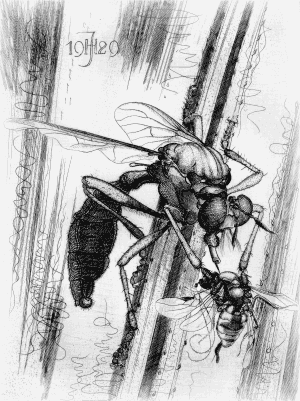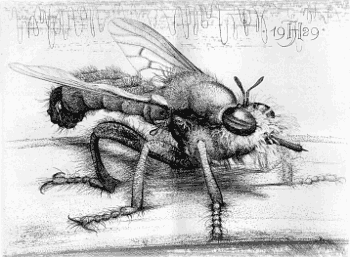|
HULL (1962): "The ROBBER FLIES, or ASILIDAE, comprise one of the largest and most abundant families of present day insects. Distributed through all parts of the world, over 400 genera [now 530] and subgenera have been proposed and about 4,761 species are known [now 7,003]. In addition, 18 genera and 39 species have been described from Eocene, Oligocene, and Miocene; 15 of these genera are also Recent [cf. Fossil]. Because of their predatory habit of feeding on other insects and their voravious appetites, they contribute to the maintenance of the natural balance among insect populations. To some extent, parasitic wasps and flies are taken by them, but much of their prey consists of plant-feeding insects. Certain species are known to seriously deplete the populations of apiaries. The adults are, with few exceptions, active flies, of considerable size and readily attract attention.
Hermann Loew in 1847 began a world study of the Asilidae; his publications on this project continued until 1874. During the last half of the nineteenth century, many dipterists contributed to our knowledge of this family. Today, much excellent work is being done regionally on the Asilidae..."
Robber Flies in Art
Hans John, 1929 [Museum Wiesbaden]
|

|

|
|
Dioctria spec. with prey
|
Laphria flava
|
|